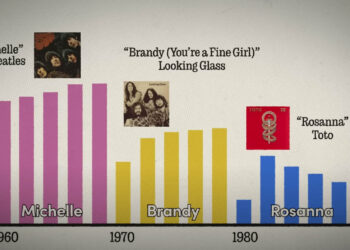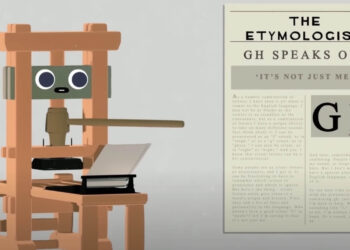
- Image via Wikipedia
Recently, I came across an interesting article thanks to Jill O’Neill’s Twitter stream. The author of the post, Lukas Koster, tried to assess whether an e-book is really a book. Now, while this might seem an academic question of little practical consequence, the fact of the matter is that for libraries, publishers, and authors, the questions raised by Koster are fundamental.
The essence of Koster’s essay deals with the “Functional Requirements for Bibliographic Records,” (FRBR) limited to the Group 1 entities including books. He talks about the logical, phenomenological chain the Library of Congress uses to think through these issues:
- Work – a distinct intellectual or artistic creation
- Expression – the intellectual or artistic realization of a work
- Manifestation – the physical embodiment of an expression of a work
- Item – a single exemplar (or copy) of a manifestation
In this model, a “work” is the intellectual output that is revealed through expression and captured in some manifestation that is possessed as a single item — a copy of a book, let’s say.
But when contemplating how a manifestation becomes an item in the e-world, Koster runs aground, asking if perhaps the FRBR needs another level to accommodate the realities of e-publishing — that is, articles not captured in an issue, e-manifestations that are manipulable on the device level, and the proliferation of output standards and media.
For cataloging, selling, archiving, and tracking, the proliferation of manifestations into items that recurse into manifestations becomes problematic. My personal experience as an author with books available in print, PDF, EPUB, mobi, and many other formats has brought home how tough it is to manage all these different options, and also how different the experience can be for different readers. People enjoying “an absorbing mystery that is chock full of twisting plots and tantalizing clues” (hey, it’s an actual review, and I’m sick of Dan Brown outselling me!) are reading the same work realized through the same mode of expression (writing), and even the same manifestation (a novel), but they aren’t experiencing the same item. Did they read the book on the Kindle? The Kindle iPhone app? The Kindle desktop app? PDF on-screen? PDF printed two-up? PDF on a Sony Reader?
Ultimately, perhaps the answer isn’t to add bifurcations to the “item” end of the model, but to truncate the model after “manifestation.” But there are problems with this, as “manifestations” are described more precisely by:
- form of carrier
- extent of the carrier
- physical medium
- system requirements (electronic resource)
- file characteristics (electronic resource)
- mode of access (remote access electronic resource)
- access address (remote access electronic resource)
As noted above, a Kindle book downloaded may be read on a Kindle device, an iPhone, or a computer — or any combination of the three over the course of reading the entire work.
Should we trim up the tree further? Simply stop at “expression”? In that case, you would have the expression of the work “Tom Sawyer,” with the FRBR silent from that point on. And that may be where we’re headed — toward a world that can’t presume items or manifestations, but only list expressions of works. Or perhaps we should evacuate some of the detail from “manifestation” in order to provide an appropriate silence on the issues involved.
Attempts to identify each item potentiality or each manifestation are becoming akin to debates about how many angels can dance on the head of a pin. In this case, however, it’s driven by a proliferation of items that can manipulate manifestations unpredictably.
In this realm, the angels certainly aren’t making it any easier.
Discussion
3 Thoughts on "How Many Books Dance on the Head of an e-Pin?"
There’s another very practical aspect to all this, and that’s the issue of identifiers.
Here’s how it’s SUPPOSED to work:
–The ISTC, the International Standard Text Code, is the identifier of the WORK. (ISTC is a new standard and it has not been used much yet, but it should be.) A given work should have one and only one ISTC. (There is obviously the question of when one work becomes a different work: a corrected version in a reprint is not, a new edition generally IS considered a distinct work.)
–The ISBN, the International Standard Book Number, is the identifier of a SEPARATELY TRADEABLE PRODUCT, and thus is generally considered to correspond to the MANIFESTATION. Publishers have routinely assigned unique ISBNs to the hardcover and paperback versions of a book, because they are separate tradeable products: if somebody orders the book, you need to know which of those they want. The murkiness comes in the digital era. Technically (and officially) all separately tradeable versions of a book should have a separate ISBN: thus the Kindle version is not the same as the Sony version, and the NetLibrary version is not the same as the eBrary version. . . . You see the slippery slope here. Publishers are gravitating (incorrectly) to assigning an “eISBN” and using it to refer generically to any e-version of the book. That undermines the whole purpose of the ISBN because it eliminates the distinction between distinct tradeable products: the Kindle version is not the same as the Sony version. One way around this is for the publisher to assign an ISBN to the ePub version (and a separate one to a web-ready PDF version, I might add) . . . but this just pushes the issue downstream. My view (and I am currently in the minority here but I think this view will ultimately prevail) is that when another entity (say, Amazon or NetLibrary) takes that ePub or that PDF and creates _their_ version, THEY should assign a new ISBN to that SEPARATELY TRADEABLE PRODUCT. I think this is completely logical and consistent. However, publishers (currently) see this as “losing control” of the ISBN. On the other hand, many publishers balk at assigning bunches of ISBNs because their systems can handle the complexity.
Sorry to go on a bit but this is actually a huge issue that is preoccupying me a lot these days.
One other point: the “item” in the FRBR scheme is a COPY of the hardcover book, or a FILE on your Kindle; the hardcover and the Kindle version are each MANIFESTATIONS of the written EXPRESSION of the WORK.
Don’t get me going on performances. . . .
–Bill Kasdorf
Quick correction: the end of the long paragraph should say “because their systems CAN’T handle the complexity.”
And another observation: librarians tend to think in terms of WORKS whereas publishers tend to think in terms of MANIFESTATIONS. In the past, the librarian could just say “sure, we have that book” whereas the publisher is selling you a product. But that was then, this is now. We’re now seeing that their needs intersect: the publisher needs customers, and the librarian needs patrons, who are looking for a WORK to be able to unambiguously specify which MANIFESTATION of that work they want.
I did not know of the existence of the ISTC, but in my original post http://commonplace.net/2009/11/is-an-e-book-a-book/ I argue we need an identifier for what I call “stories”, which are units of content, or the FRBR “work” entity. I suggested to use DOI for that.
About e-books being FRBR Manifestations: I argue that they can either be Expressions or Manifestations, depending on the nature of the e-book. If it’s a new “born digital” publication containing for insatnce a number of earlier published articles/works, it would be an Expression of a new aggregate Work in its own right.


